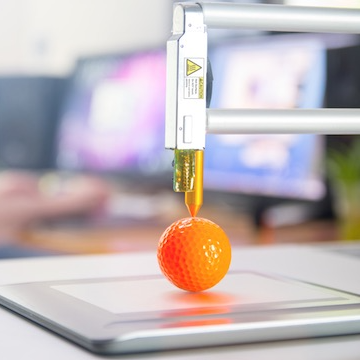3D Printing in Education and STEAM Programs
Sunday, 15 October,2023
In recent years, 3D printing has emerged as a revolutionary technology with the potential to transform various industries. Beyond manufacturing and prototyping, 3D printing has found its way into education and STEAM (Science, Technology, Engineering, Arts, and Mathematics) programs, offering students a unique and hands-on learning experience. This blog explores the growing influence of 3D printing in schools, the development of 3D printing curricula, the impact of additive manufacturing on education, and how this technology fosters experiential learning and technology education.
3D Printing in Schools: A New Frontier
With its ability to transform digital designs into tangible objects, 3D printing has captured the imagination of educators and students alike. Recognizing the educational potential, schools around the world have begun integrating 3D printing into their curricula, bringing innovation and creativity to the classroom.
By introducing 3D printing technology at an early age, students can develop essential skills in problem-solving, critical thinking, and design thinking. They gain exposure to cutting-edge technology, preparing them for the challenges of the future workforce and encouraging them to become active participants in the digital era.
Developing 3D Printing Curricula
As schools embrace 3D printing, the need for well-structured and purposeful curricula becomes evident. Educators are tasked with designing learning modules that align with existing educational standards while incorporating the hands-on aspects of 3D printing.
An effective 3D printing curriculum introduces students to the fundamentals of technology, such as understanding the principles of additive manufacturing, selecting appropriate materials, and learning to operate 3D printers safely. Beyond technical aspects, the curriculum also emphasizes creativity and innovation, encouraging students to envision and design their projects.
To make 3D printing an integral part of the educational experience, the curriculum often spans across subjects, blending elements of science, art, mathematics, and engineering. This interdisciplinary approach, inherent to STEAM education, allows students to grasp the broader implications and applications of 3D printing technology.
Additive Manufacturing in Education: Benefits and Applications
The integration of 3D printing in education offers numerous benefits to both educators and students. Some of the key advantages include:
- Hands-On Learning: 3D printing provides students with a tangible, hands-on learning experience, enabling them to transform theoretical concepts into real-life objects.
- Creativity and Design Thinking: By encouraging students to design and create their 3D models, the technology nurtures creativity and design thinking, fostering a deeper understanding of complex concepts.
- Experiential Learning: Experiential learning, where students learn by doing, is promoted through 3D printing. This approach increases engagement and retention of knowledge.
- Customization and Personalization: 3D printing allows students to tailor their projects to suit their interests and needs, promoting a sense of ownership and pride in their work.
- Problem-Solving Skills: As students encounter design and printing challenges, they develop problem-solving skills, resilience, and perseverance.
- Career Readiness: Introducing 3D printing in schools prepares students for future careers in fields such as engineering, product design, and advanced manufacturing.
- Inclusivity: 3D printing technology can be adapted to accommodate students with different learning styles and abilities, making education more inclusive.
Fostering Experiential Learning and Technology Education
Experiential learning is a powerful pedagogical approach that places the student at the center of the learning process. 3D printing exemplifies this approach by providing students with opportunities to experiment, fail, and iterate until they achieve their desired outcomes. The experiential nature of 3D printing cultivates a growth mindset, where students view mistakes as opportunities for learning and improvement.
Moreover, 3D printing brings technology education to life. Rather than passively absorbing information from textbooks, students actively engage with technology by designing and fabricating objects. This hands-on interaction fosters a deep understanding of how technology works and its potential applications in various fields.
As students witness the transformation of their digital designs into physical objects, they develop a profound appreciation for the link between technology and creativity. This integration of art and design principles with science and engineering concepts embodies the essence of STEAM education, encouraging holistic thinking and cross-disciplinary exploration.
Conclusion
3D printing has emerged as a powerful educational tool, enriching the learning experiences of students across diverse subjects. Its integration into curricula not only prepares students for the technological challenges of the future but also cultivates essential skills such as creativity, critical thinking, and problem-solving.
By embracing 3D printing in education, schools open doors to a world of experiential learning and foster a new generation of innovators, designers, and engineers. As technology continues to advance, its role in education will become increasingly pivotal in nurturing the skills and mindsets required to navigate an ever-evolving world. With 3D printing as a catalyst, education evolves into a dynamic and transformative journey that empowers students to shape the future with creativity and ingenuity.
